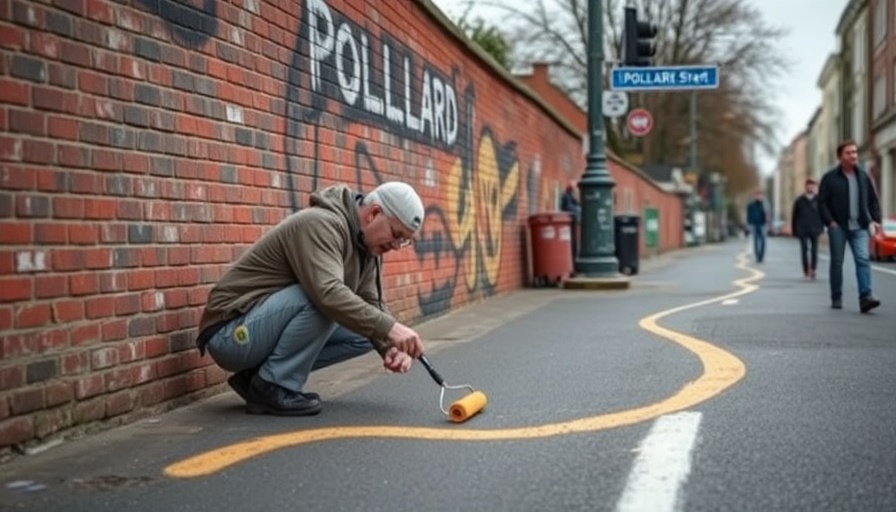
A Controversy Over Streets and Art
A London club is igniting a firestorm of debate with its claim that Banksy street art was unlawfully removed and transported to America. This incident illustrates not only the heated discourse surrounding art ownership but also the resilience and innovation inherent in modern urban art.
The Heart of the Matter: Unlawful Removal Claims
The crux of the conflict lies in the assertion by the club, which has expressed their intent to protect the artistic work, asserting that the removal was executed without proper permissions. Banksy's works—a fusion of striking visuals and poignant messages—are often seen as integrally linked to the spaces they occupy. The notion of removing such pieces invokes a complicated dialogue about cultural heritage and ownership.
Street Art: A Global Commodity or Local Treasure?
The global rise of street art has transformed these once temporary murals into coveted artifacts drawing significant commercial interest. Yet, this scenario raises questions on whether such art should remain firmly rooted in its original locales. The tension between commercial gains and local culture underscores a burgeoning trend where cityscapes become galleries, yet local advocates push back against disengaging art from its community foundations.
Isolation of Art: The Case of Commercialization
This event highlights a growing trend in the commercialization of street art, akin to the trajectories of Silicon Valley startups transitioning from local ventures to global brands. As artists like Banksy gain fame, their artworks are seen not merely as expressions but as financial assets for investors and collectors. This trend raises questions about who truly benefits from such relocations and whether local communities are being sidelined in favor of profit-driven ventures.
Similar Cases: Lessons From Other Cities
Looking at other urban environments, we can see parallel situations that underscore similar tensions. For instance, when murals in cities like Berlin and Los Angeles are removed or relocated, local communities often find themselves grappling with the loss of a piece of their cultural fabric. These cases remind us that each artwork has a story intertwined within its urban landscape, which cannot simply vanish without consequence.
Future Implications: Cultural Heritage and Urban Identity
As cities continue to evolve, the importance of understanding and preserving cultural heritage has never been more critical. The ongoing conflict over the Banksy artwork serves not only as a legal matter but as a case study on the balancing act required to navigate between business interests and community integrity. Going forward, it could promote dialogue about legal frameworks that protect local art forms and the communities these artworks represent.
A Call for Local Action
In order to address issues like those raised in this ongoing dispute, local organizations and municipalities must get involved in creating policies that foster a supportive environment for street art while also protecting local culture. Engaging community members in discussions about art, ownership, and cultural significance may yield more sensitive approaches to the dynamic world of urban artistry.
 Add Row
Add Row  Add
Add 



Write A Comment